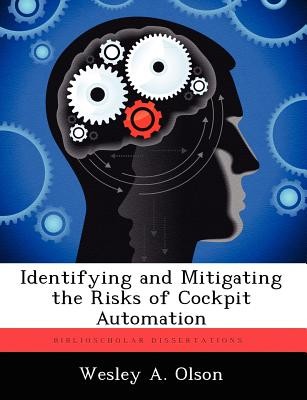
- We will send in 10–14 business days.
- Author: Wesley A Olson
- Publisher: BiblioScholar
- ISBN-10: 1249592844
- ISBN-13: 9781249592846
- Format: 18.9 x 24.6 x 0.3 cm, softcover
- Language: English
- SAVE -10% with code: EXTRA
Identifying and Mitigating the Risks of Cockpit Automation (e-book) (used book) | bookbook.eu
Reviews
Description
Cockpit automation has delivered many promised benefits such as improved system safety and efficiency, however, at the same time it has imposed system costs that are often manifest in the forms of mode confusion, errors of omission, and automation surprises. An understanding of the nature of these costs as well as associated influencing factors is necessary to adequately design the future automated systems that will be required for Air Mobility Command aircraft to operate in the future air traffic environment. This paper reviews and synthesizes Human Factors research on the costs of cockpit automation. These results are interpreted by modeling the automated cockpit as a supervisory control system in which the pilot works with, but is not replaced by, automated systems. From this viewpoint, pilot roles in the automated cockpit provide new opportunities for error in instructing, monitoring, and intervening in automated systems behavior. These opportunities for error are exacerbated by the limited machine coordination capabilities, limits on human coordination capabilities and properties of machine systems that place new attention and knowledge demands on the human operator. In order to mitigate the risks posed by these known opportunities for error and associated influencing factors, a system of defenses in depth is required involving integrated innovations in design, procedures, and training. The issues raised in this paper are not specific to transport aircraft or the broader aviation domain, but apply to all current and future highly automated military systems.
EXTRA 10 % discount with code: EXTRA
The promotion ends in 20d.22:33:03
The discount code is valid when purchasing from 10 €. Discounts do not stack.
- Author: Wesley A Olson
- Publisher: BiblioScholar
- ISBN-10: 1249592844
- ISBN-13: 9781249592846
- Format: 18.9 x 24.6 x 0.3 cm, softcover
- Language: English English
Cockpit automation has delivered many promised benefits such as improved system safety and efficiency, however, at the same time it has imposed system costs that are often manifest in the forms of mode confusion, errors of omission, and automation surprises. An understanding of the nature of these costs as well as associated influencing factors is necessary to adequately design the future automated systems that will be required for Air Mobility Command aircraft to operate in the future air traffic environment. This paper reviews and synthesizes Human Factors research on the costs of cockpit automation. These results are interpreted by modeling the automated cockpit as a supervisory control system in which the pilot works with, but is not replaced by, automated systems. From this viewpoint, pilot roles in the automated cockpit provide new opportunities for error in instructing, monitoring, and intervening in automated systems behavior. These opportunities for error are exacerbated by the limited machine coordination capabilities, limits on human coordination capabilities and properties of machine systems that place new attention and knowledge demands on the human operator. In order to mitigate the risks posed by these known opportunities for error and associated influencing factors, a system of defenses in depth is required involving integrated innovations in design, procedures, and training. The issues raised in this paper are not specific to transport aircraft or the broader aviation domain, but apply to all current and future highly automated military systems.


Reviews